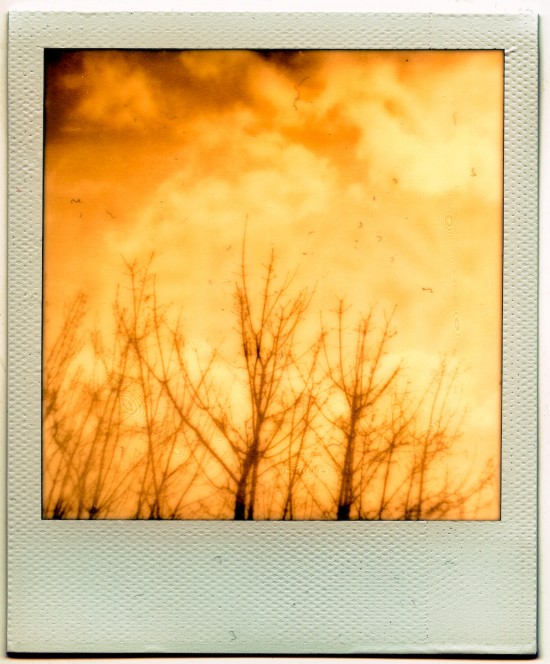
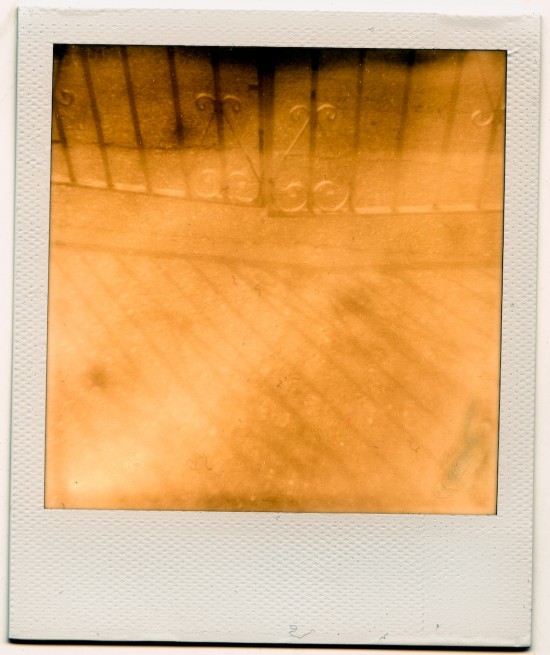
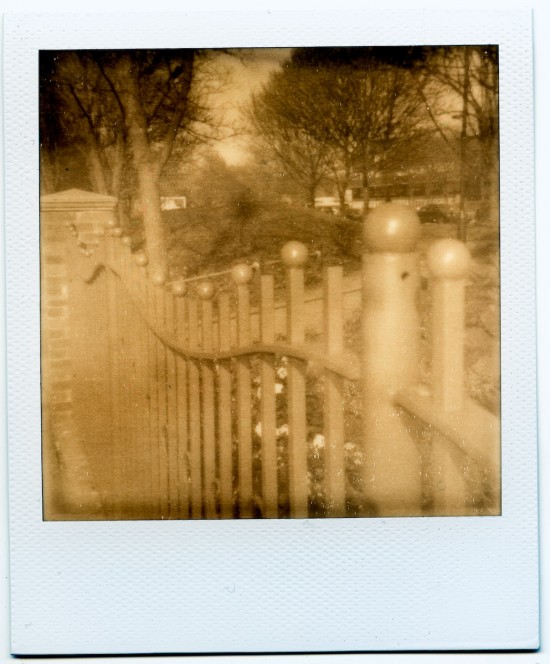
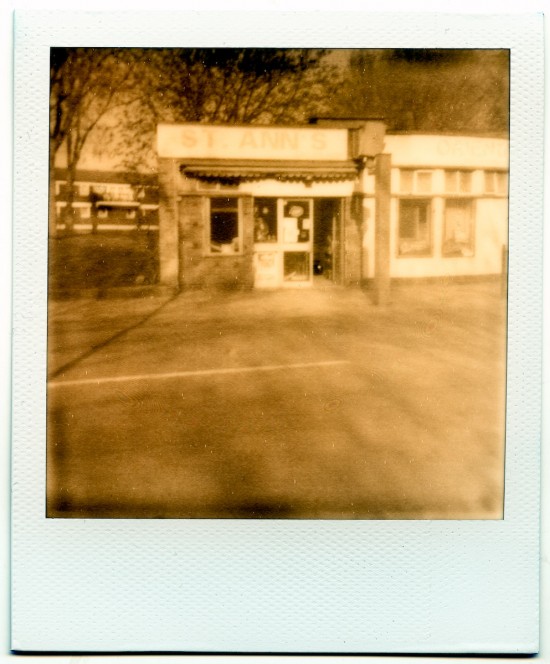
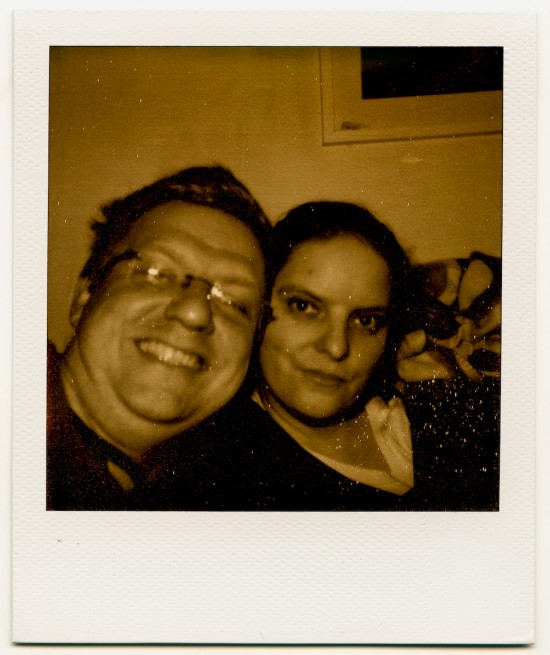
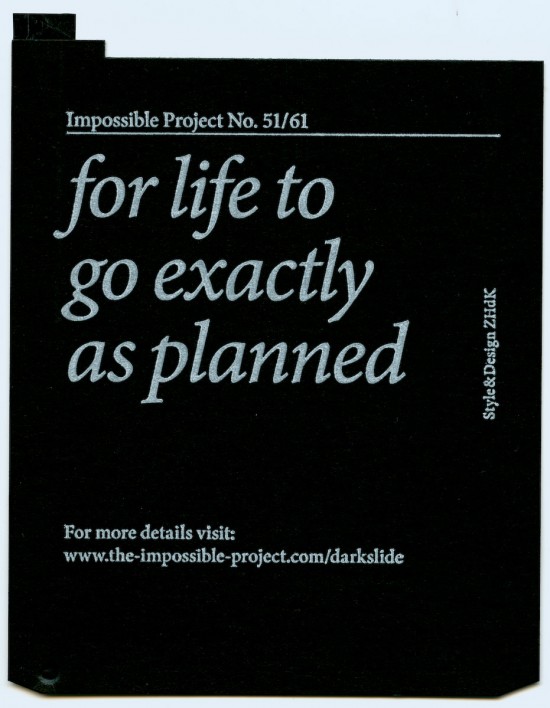
Conclusion
Just like the man said on the Impossible website, PX100 is very sensitive to light, especially too much or too little of it. The fact that I’ve not used it in the camera it was meant for probably didn’t help matters, conversion filter or not. But here’s what I’ve noticed:
- Indoor shots with flash seem to work better than outdoor shots without. That’s weird because all my other plastic cameras love the outdoors.
- Outdoor shots in strong sunlight come out over-exposed. You can hardly make out detail, yet the PX100 seems to capture it. If I get my hands on a 2nd pack (possibly tomorrow) I’ll replace my ND filter with a 1 stop instead of a 2stop, or try a shot without it altogether. Also there’s of course the light/dark slider that can be messed with.
- We strictly adhered to the developing instructions (i.e. temperature, shield from light, etc) – apart from one picture we messed with which didn’t come out at all. Interesting so see something like white wall paint on the inside of the PX100 😉
- We didn’t have enough material to experiment with and go wild – but I understand there’s a lot of potential for manipulation (i.e. hair dryer, fridge, sharp objects etc)
These scans look much better than the originals I have to admit. I haven’t deliberately photoshopped them, but have set my scanner to auto-correct (it’s an Epson V750 with Silverfast AI). Therefore, contrasts are much harder in the scans. Pictures that I thought were very overexposed actually came out dramatically well. Bear this in mind if your eyes are not overjoyed with the results you get. Unless you intend to frame the original Polaroid you needn’t worry: there’s a lot more in them than the eye can see, like in a slide or negative.
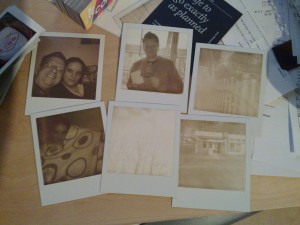
I’ve noticed some stronger development on the outer 5mm of the picture. You can see this well in some over-exposed scans above due to applied colour correction. I don’t know if this is a Polaroid tradition but I can imagine it is – similar yet less pronounced artefacts are visible in some of our Fuji Instax Shots.
Hi,
I’ve been searching for a while now to try and find some film for a Polaroid 600 camera which is cheaper than £20 for 8 which is what I also found but can’t find anything. Have you found any since??
Thank you so much, Anna
Sadly not Anna, I think that’s a price we need to live with from now on if we want to use Polaroid cameras 🙁 It’s not great that it’s so expensive. On the other hand, at least we can still get film that’s fresh and that works in our old cameras. Watch for sales at shops like The Photographers Gallery, I’ve bought some packs for as little as £10 there not too long ago. Sometimes you get lucky.
Impossible are trying to make this cheaper as new technology becomes available (and as more people buy it) but it won’t shift much I don’t think.
Hi Jay,
I am having the same problems too, having some PX 70 films with a one600 camera.
May I know where do you get the 2x ND filter tape (affordably)?
Thanks!
KP
Hi KP,
you have several options. If you want to go down the experimental DIY route (which I love) have a look in professional photography and lighting shops. Ask for something called a gel which is a gelatine based sheet filter. Usually available in larger sizes so it fits in front of spot lights. You only need a small piece, depending if you want to cover the entire film or just your lens with it.
Alternatively you can ask in said shops for a filter swatch, those are small enough to cover the lens only and will do the trick. A swatch is a selection of filters in a small booklet so that you’d order larger sheets of and when you need them. In our case though we’d just cut a piece of ND filter out and use it. If you can’t get hold of either a gel or a swatch book then I recommend a Quality Street wrapper. Seriously, it works a treat!
Your final (and most official) option is go head over to http://the-impossible-project.com and buy a Filmpack Filter. That’s the same material as discussed above, but it’s cut to size to fit an entire film cassette. It’s reusable too and currently my favourite option because it does not compromise your viewfinder. It’s about $12 for a double-pack: http://shop.the-impossible-project.com/shop/accessories/camera/ac_nd_filter_twin
Hope this helps – happy shooting 😉
Thanks a lot!
Jay,
According to the website that filmpak filter is for using the 600 film in an SX-70 camera. But are you using the SX-70 film in a 600 camera, and the filter is working?
Hi Josh,
yes that is correct – I’m using a similar filter the other way to make PX100 film work in my Polaroid 600. Let me explain:
Technically the filmpack filter you’ve see is a sheet of ND plastic (neutral density) which goes directly over the 600 film pack. The purpose here is that the stronger exposure from an SX-70 camera will get “dimmed down” so that it doesn’t overexpose the 600 film. The S-70 camera expects 100 ISO film, so we need 1.5 stops less light. The filter does this, and the great news here is that you won’t have to look through a darkened viewfinder.
But what I’m describing in this article is exactly the opposite: I’m using 100 ISO film in a camera that expects the film to be more sensitive, so I need to trick it into thinking it needs to give the film more exposure. I do this by using the same type of filer and stick it in front of my camera’s electric eye. It then thinks it’s darker, cranking up the exposure, and Bob’s your uncle.
Admittedly this is no longer necessary because now we have PX 600 film and many variants available, but at the time of writing all that was available was the PX 100 film and I didn’t have an SX-70 then.